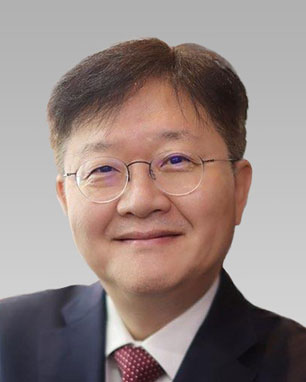Award Supports Work on Non-Centrosymmetric Materials
University of Houston chemistry alumnus Kang Min Ok (Ph.D. ’04), a professor in the Department of Chemistry at Sogang University in Seoul, was selected for the 2024 Global Leader Research Project, sponsored by the Ministry of Science and Information and Communication Technology (MSIT) and the National Research Foundation of Korea.

The Global Leader Research Project is the largest individual grant program among available funding and resources for science and technology. It aims to foster world-class research leaders for the development of future innovative technologies and to intensively support in-depth research through global cooperation.
Ok is one of nine researchers selected by the Global Leader Research Project They will each be funded at nearly U.S. $625,000 per year for up to nine years.
While at UH, his mentor was Shiv Halasyamani, currently the Hugh Roy and Lille Cranz Cullen Distinguished University Chair.
“Dr. Ok was the only chemistry winner of this prestigious grant,” said Halasyamani. “I am proud of his many accomplishments. The funds will let him investigate the design, discovery, and synthesis of new non-centrosymmetric materials.”
Ok is considered a first-rate researcher in the field of asymmetric solid-state materials, following a career spanning numerous works on the synthesis, detailed structural analysis, characterization, and structure-property relationship of various asymmetric solid-state materials and the publication of relevant papers with high impact factors.
He was selected for the project based on his excellent capacity and abundant experience, along with the originality and feasibility of his plans for systematic development of non-centrosymmetric materials that can exhibit properties like nonlinear optics, piezoelectricity, and ferroelectricity by manipulating the structure of crystalline solids.
Ok aims to develop excellent non-centrosymmetric materials by designing asymmetric monomers with high polarization anisotropy and observing solid-state chemical reactions to study their mechanisms. His plans exhibit a clear goal to conduct in-depth research by growing large single crystals and accurately measuring nonlinear optics, piezoelectricity, and ferroelectricity.
If this goal is successfully achieved, it is expected to source a core technology for material development and to contribute greatly to advancing science and industry.
- Information courtesy of Sogang University